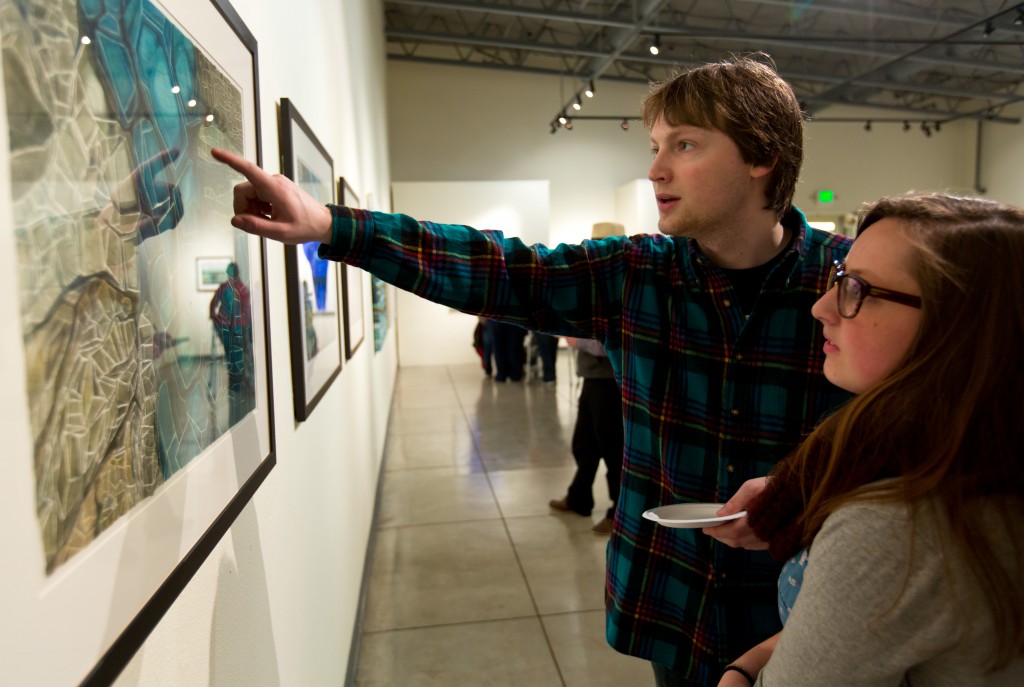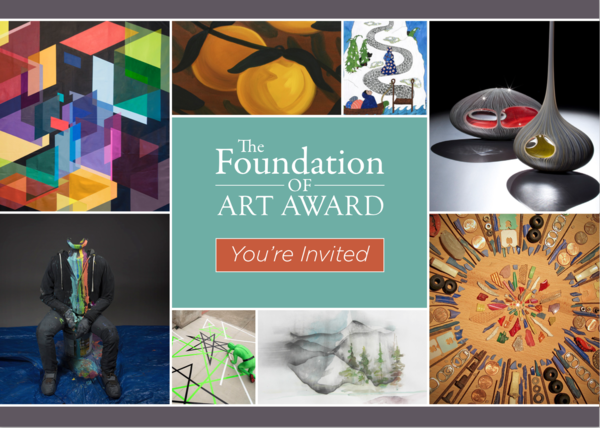Page 4 • (173 results in 0.034 seconds)
-

Department of Art and Design opens free workshop to the public The doors of the classroom are swinging wide open. On Monday, February 22, from 6-8pm, Pamela Belyea, the co-founder of Gage Academy of Art, will be teaching the tools of the trade and how…
in the world of fine art. She studied art and architecture at Cooper Union, Parsons and the Art Students League in New York, as well as drawing at the École Supérieure des beaux-arts in Paris, before launching Gage. Married to a painter and colleague/mentor/friend to multiple artists, curators, collectors and gallery owners, Belyea brings a well-informed, practical approach to the business of working artists. The four-part presentation will take place in Ingram Hall 100 and is open to the public
-
Twenty-five years ago, the Makah Nation successfully hunted a gray whale. This action drew the ire of animal rights activists who often rooted their criticism in racism and stereotypes of Indigenous
Illustration: "The Enlightenment of the Great Houses", 2014, acrylic painting on canvas, by Micah McCarty (Makah) The Walter C. Schnackenberg Memorial Lecture - April 17, 2024Makah Voices and the SeaTwenty-five years ago, the Makah Nation successfully hunted a gray whale. This action drew the ire of animal rights activists who often rooted their criticism in racism and stereotypes of Indigenous authenticity. Drawing from the tribal nation’s historical and contemporary relationship with the sea
-
Face the Music Inevitably, worried parents will arrive on music professor Greg Youtz’s office doorstep after their child has announced they want to become a composer. “Now what?” the parents ask Charged with running the university’s composition program, Youtz usually succeeds in calming the parental…
he went home and wrote a piece for the bassoon and flute. He woke up the flutist, his sister, and insisted they give it a run through that very night. Sis, reluctantly, complied. Composers are obsessive that way. At a musical composition workshop in Lagerquist recently, Youtz used the whiteboard and a purple pen to demonstrate what goes on in a composer’s mind. He started the drawing with a purple squiggle and tossed the pen to one of 10 students in the room. As each student took a stab at
-

The University Gallery’s upcoming exhibit provides audiences with a view of the natural world through the eyes of two Washington artists. The University Gallery presents the work of Cynthia Camlin and Elise Richman in “Each Form Overflows its Present.” The new exhibition features the ever-changing natural world…
and in Tacoma’s Woolworth Windows. Camlin is Associate Professor of Painting and Drawing at Western Washington University, with work featured at both the Tacoma Art Museum and the 2012 Neddy at Cornish exhibition. Join us for an opening reception from 5-7pm on March 13. Regular gallery hours are Monday-Friday, 8am-4pm. Read Previous Mobile Hot Shop visited PLU in February – Gallery Read Next Peace and Conflict students shed light on Reconciliation Day LATEST POSTS Meet Professor Junichi Tsuneoka
-
“Tyranny of Oil” author to appear at PLU A nationally-known expert and critic of Big Oil will speak at PLU on Saturday, October 18, at 7:30 p.m. in Xavier Hall, Nordquist Lecture Hall, off Park Avenue South. The address is free and open to the…
deception. In her new 480-page book, “The Tyranny of Oil: The World’s Most Powerful Industry, and What We Must Do to Stop It” (William Morrow, October 7, 2008) Juhasz proposes a clear set of meaningful and achievable solutions, including the break-up of Big Oil. Drawing on considerable historical research, in her address Juhasz will explore the parallels between today’s companies and Standard Oil, the most powerful corporation of the early 20th century. Juhasz holds a master’s in public policy from
-
Earth Day – Connecting to Everything on Earth: Its Land, Waters, and Peoples (Plant, Animal, and Human) PLU’s 2012 Earth Day lecture will be by Michael Pavel at 7:30 p.m. Tuesday, April 17 in the Scandinavian Cultural Center. Pavel is a professor of education studies…
connect to places, and how intimately knowing a local place helps us to understand and connect with the world as a whole. The lecture will be followed by a question-and-answer period and is free and open to the public. The Earth Day lecture is sponsored by the Office of the Provost and by the Environmental Studies Program, which educates students to engage actively and critically the complex relationships between people and the environment, drawing upon integrated and interdisciplinary perspectives
-
The Chemistry Department at the University of North Texas invites applications for our Summer 2022 NSF-REU (Research Experience for Undergraduates) Program. The ten-week program will begin Tuesday, May 31 (arriving Sunday, May 29). Participants will receive a $5,000 stipend, and housing will be provided. Funds…
experimental and computational researchers, drawing on UNT’s world-class resources in both instrumentation and high-performance computing. Possible research areas include: Light-Harvesting Organic/Metal-Organic Materials * Computational Catalyst Design * Transition Metal Catalysis for Organic Synthesis * Electrochemical Characterization of Semiconductor Materials * Porous Materials for Environmental Remediation * Gas-Sensing Materials * Pharmacological Modeling of Illicit Substances * Organometallic
-
Tacoma artist Matt Johnson, a visiting instructor in the Department of Art & Design, explores the details of everyday life in his upcoming exhibition. Join SOAC and the University Gallery for the opening reception of “Matt Johnson” with light refreshments Wednesday, October 12 from 5…
visual likenesses. The portrait paintings come from the theft of Johnson’s phone this summer when he realized he still has a very strong connection to these visual likenesses and tried to reclaim the stolen images on the phone as his. “I am trying to reconnect with family and friends on a more personal level again,” Johnson says. “This body of work has helped me to realize this need.” Johnson will showcase approximately 18 works. The exhibition will combine drawing, painting and small sculpture
-

The Tacoma art community will be represented at the eighth annual Foundation of Art Award Exhibition in PLU’s University Gallery October 14- November 11. The exhibition features the 2015 nominees and winners of the Foundation of Art Award given by the Community Foundation. All are…
processes centered in collage. Years later he began to explore art through drawing and murals.Online GalleryView an online gallery showcasing images of each nominee's artwork, as well as interviews with the artists. ViewEach year, more than a dozen artists are nominated and one is selected for this significant award. The winning artist receives a $7,500 award to create a commissioned art piece for the Community Foundation representing their interpretation of the Pierce County community. In 2008, the
-

By Sarah Cornell-Maier ‘19. This Fall, Pacific Lutheran University is introducing a new class that serves as a gateway to the Innovation Studies Program . Hist/Phil 248: Innovation, Ethics, and Society is a team-taught course that combines many different fields of study into one. It…
and connected to the worlds of work and research. Students complete drawing and improv exercises, work in teams, and learn the stages in innovation research. The process is fun for the teachers, as well as the students. “Innovation Studies is by nature interdisciplinary,” said Professor Halvorson, director of the program. “Our students collaborate on problem solving by working and laughing together at the boundaries of art & design, business, economics, history, and other disciplines. The
Do you have any feedback for us? If so, feel free to use our Feedback Form.


